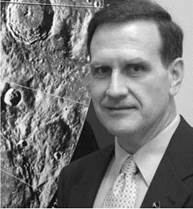Paving the Way for Apollo 11
The historic flight of Apollo 11 in July 1969 did not sprout from the head of Zeus, fully grown like Athena. The events from when men first gazed at the Moon up in the night sky until the launch of humanity’s first voyage to another world is a broad and complex topic and is the subject of this book.
Readers of David Harland’s previous books on the exploration of the Moon are well acquainted with his detailed research, lucid style and ability to summarise complex events. But on this present topic, David has truly surpassed himself. The story of the detailed study, preparation and flight of robotic space missions that prepared us to send people to the Moon is a long and complicated one, with many simultaneous events occurring in different parts of the world and on the Moon. His account clearly details how we advanced our understanding of the Moon, from a beacon in the night sky to a neighboring world with its own history and processes.
Before people could land on the Moon, we needed to know what awaited these explorers – one can only surmise so much by peering through a telescope from a range of over 400,000 km. The robotic precursor program that blazed a trail to the Moon involved crash landers, orbiters and soft landers. This progression now seems logical and well considered, but in fact at that time it was one that grew piecemeal in response to geopolitical, budgetary and bureaucratic pressures. Understanding this complicated and sometimes confusing story is necessary in order to appreciate fully the accomplishment of the Apollo program.
Paving the Way for Apollo 11 holds many lessons for our return to the Moon, some depressingly familiar. Different factions within NASA had differing agendas and desires which were usually worked out for the best, but not always. Science and engineering in the space program were in constant tension then, and have been ever since. The pressing need to know what the Soviets were up to on the Moon led to accelerated schedules and simultaneous exploration programs and missions. Some investigators predicted that disaster awaited us on the Moon, with spacecraft likely to be swallowed whole by giant bowls of choking dust. The information from these robotic probes disproved some of the wilder speculations on lunar surface conditions and allowed us to plan and execute the Apollo missions in a near flawless manner.
In this book David Harland recounts this fascinating story with clarity and verve, re-creating the excitement of the Apollo days when we were not merely going to the
Moon, but racing there. People of that time didn’t know how events would unfold, yet they made many excellent decisions, and from these efforts we gained a new and more complete understanding of the Moon, the Earth and their intimate relationship and history. The exploration of the Moon revolutionised science in ways we are still trying to understand. And now, the Moon beckons us to return and capitalise on that wonderful legacy.
 Paul D. Spudis
Paul D. Spudis
Lunar and Planetary Institute
Houston, Texas










